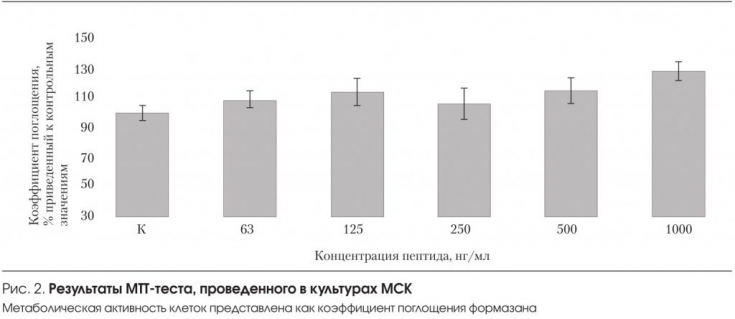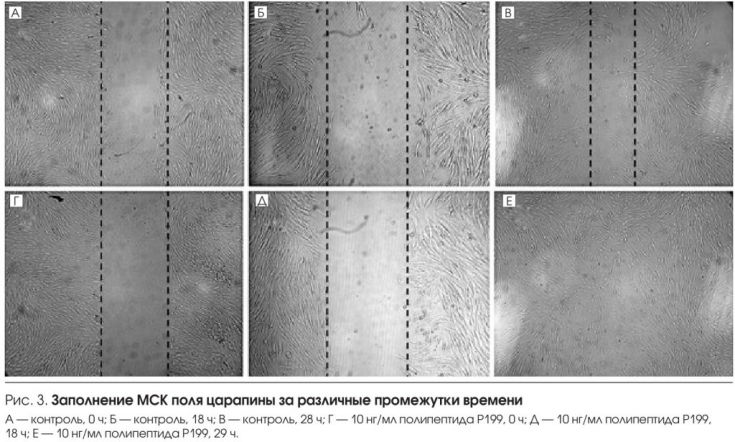Recently, the potential role of synthesized recombinant polypeptides in dermatology and dermatocosmetology has been widely discussed. Thanks to the development of biotechnological methods for their production, high-quality production of these compounds has become possible.
At the same time, leading companies offering cosmetic products based on recombinant polypeptides to consumers constantly monitor their quality and effect on the skin.
On the basis of the Institute of Gerontology named after D.F. Chebotareva of the National Academy of Medical Sciences of Ukraine has passed a study on how sh-Oligopeptide-72 (Wharton Jelly Peptide P199) affects the skin, used in ABG Lab (USA) preparations, which are represented by EMET™ . The company shared the results of the study with readers of estet-portal.com.
Why the polypeptide sh-Oligopeptide-72 became the object of scientific research
Increased attention to recombinant peptides is due to the fact that these compounds are not xenogenic, do not carry an infectious hazard and can be produced in large quantities. Of particular interest are peptides characteristic of the tissues of the umbilical cord — an organ rich in stem cells and polypeptides capable of initiating their activity.
sh-Oligopeptide-72 (Wharton Jelly Peptide P199) is a synthetic analogue of a polypeptide widely present in human umbilical cord tissue. This compound is of a polypeptide nature and is considered as a stimulator of division and differentiation of stem cells of the mesenchymal connective tissue, in particular the epidermis and dermis.
Scientific interest in the sh-Oligopeptide-72 polypeptide is due to the fact that there is evidence of its effect on age-related skin changes. Therefore, the aim of the study was to study the possibilities of the compound, which is part of the preparations presented by Emet™, in stimulating the processes of renewal of the cellular structures of the dermis and epidermis when the drug is injected into the skin.
How was the scientific study of the effect of polypeptides on the skin
The purpose of the scientific study, which was conducted on the basis of the Institute of Gerontology named after D.F. Chebotareva National Academy of Medical Sciences of Ukraine (Kyiv) began to study the effect of the polypeptide sh-Oligopeptide-72 (Wharton Jelly Peptide P199) on fibroblasts and mesenchymal stem cells of the skin (MSCs).
To obtain MSCs, aspiration of adipose tissue from the inner surface of the thighs was performed in volunteer donors aged 40 years. The fat was properly mixed with wash buffer, centrifuged. The resulting stromal-vascular fraction was cultured in complete medium (DMEM enriched with 10% fetal bovine serum) at 100% humidity and a temperature of 37°C, with 5% CO2. After three passages and stabilization of the culture, the cells were used for testing.
Results of the study of the effect of the polypeptide on fibroblasts and MSCs
All the studied concentrations of the P199 polypeptide (from 1 to 1000 ng/ml) did not lead to changes in the metabolic and proliferative activity of mature fibroblasts. The average absorption values of the formazan solution produced by the cells in the medium at different concentrations of the P199 polypeptide correspond to the average value of this indicator in the control group (Fig. 1).
Mature dermal fibroblasts are not sensitive to the P199 polypeptide. No stimulating or depressing effect of all studied concentrations was found. Based on this, the polypeptide can be considered non-toxic to dermal fibroblasts.

As a result of the study, the stimulating effect of the P199 polypeptide in certain concentrations on human MSCs was revealed. Concentration from 0.5 µg/ml to 2 ng/ml has no significant effect. The metabolic activity of cells under the influence of the drug at these concentrations was close to the control (Fig. 2). At the same time, the drug at concentrations of 1—2 ng/ml stimulated the metabolic activity of stem cells.

In the experiments, no increase in the migratory activity of mature fibroblasts after exposure to the P199 polypeptide was revealed. Unlike fibroblasts, MSCs that were incubated with the P199 polypeptide showed a much higher migratory activity in the wound healing test. (Fig. 3): for 18 hours — 68.5%, in 28 hours — almost complete overgrowth.
The very fact of powerful stimulation of migration even at a low concentration of 10 ng/ml of the P199 polypeptide in the medium indicates a specific effect of the P199 polypeptide on the migration activity of skin MSCs.

influence of the studied concentrations on skin fibroblasts.
The effects of mesotherapeutic preparations containing the P199 polypeptide can be explained precisely by the effect of the substance on the migration activity of MSCs, which are recruited from the deep layers of the subcutaneous base or dermis and, probably, differentiate into fibroblasts, restore the depleted cell pool, and then remodel the matrix component, synthesizing collagens of various types, elastin and glycosaminoglycans. The lack of a stimulating effect of the drug on mature fibroblasts may be due to its inability to activate the processes of mitochondrial respiration.
Thus, based on the study of the effect of the polypeptide sh-Oligopeptide-72 (Wharton Jelly Peptide P199), contained in the preparations presented by Emet™, on fibroblasts and mesenchymal stem skin cells (MSCs), scientists came to the following conclusions.
Adult human dermal fibroblasts are insensitive to varying concentrations of Wharton Jelly Peptide P199. The substance in the concentration range of 1 - 1000 ng / ml does not show either toxic or stimulating effects on differentiated fibroblasts.
Human dermal MSCs are sensitive to the P199 polypeptide. The drug at a concentration of 1—2 ng/ml stimulates the metabolic activity of MSCs.
Wharton Jelly Peptide P199™ stimulates the migratory activity of MSCs in the dermis, but not its mature fibroblasts.









Add a comment